Disclosure: This article contains affiliate links. We may earn a commission from purchases at no extra cost to you, which helps our travel content.
The rhythm of Rio isn't just in its samba—it's in the footfalls of early morning beach runners, the hushed whispers in century-old monasteries, and the vinyl crackle from hole-in-the-wall record shops tucked between the city's famous facades. After logging miles in 23 countries across five continents, I've developed a sixth sense for finding a city's pulse beyond its postcard attractions. Last October, I touched down in Rio with two missions: scout the marathon route that winds through Flamengo Park and discover how deeply one can experience this magnificent metropolis without emptying one's wallet. The answer, I'm thrilled to report, is profoundly—all while keeping daily expenses under $50. This guide isn't about skimping on experiences; it's about maximizing authentic connections while minimizing unnecessary costs. Whether you're a fellow runner looking to test your endurance on Rio's scenic routes or a culture-seeker wanting to dive deep without the financial pressure, I've mapped out the rhythmic cadence of budget-conscious exploration in South America's most captivating coastal city.
Finding Your Rhythm: Budget Accommodation Strategies
Every marathon runner knows that establishing your base camp is crucial to performance. In Rio, where beachfront hotels command premium prices, strategic lodging choices become your first victory in the budget battle.
After years of global travels, I've learned that neighborhoods just beyond tourist zones offer the sweet spot of affordability and authenticity. In Rio, I bypassed the obvious Copacabana and Ipanema options for a modest pousada (guesthouse) in Santa Teresa, a bohemian hillside neighborhood with winding streets and artistic energy that reminded me of my volunteer stint in Northern Thailand.
For solo travelers, Rio's hostel game has evolved impressively. During my week-long stay, I split time between a $18/night bed at Books Hostel in Lapa—where the communal kitchen became my evening gathering spot with fellow travelers—and three nights in a $25/night private room at a family-run guesthouse in Santa Teresa found through Airbnb.
The magic of these choices wasn't just financial—it was experiential. At Books, I met Marcelo, a local DJ who invited me to a vinyl-only underground party where we discussed Brazilian jazz until sunrise. At the Santa Teresa guesthouse, the owner's mother taught me how to prepare traditional pão de queijo (cheese bread) one rainy morning when my run was canceled.
If you're staying longer than a week, consider negotiating weekly rates. My friend Paolo, a fellow marathon enthusiast I met during the Bangkok Half Marathon, extended his Rio stay from one week to three and secured a 30% discount by paying cash upfront and committing to the longer duration.
For those seeking spiritual dimensions, I discovered that the São Bento Monastery occasionally allows visitors to stay for modest donations. While not advertised, a conversation with Brother Anselmo after attending their famous Sunday Gregorian chant service opened this door—another reminder that in travel, authentic conversations often unlock experiences money can't buy.
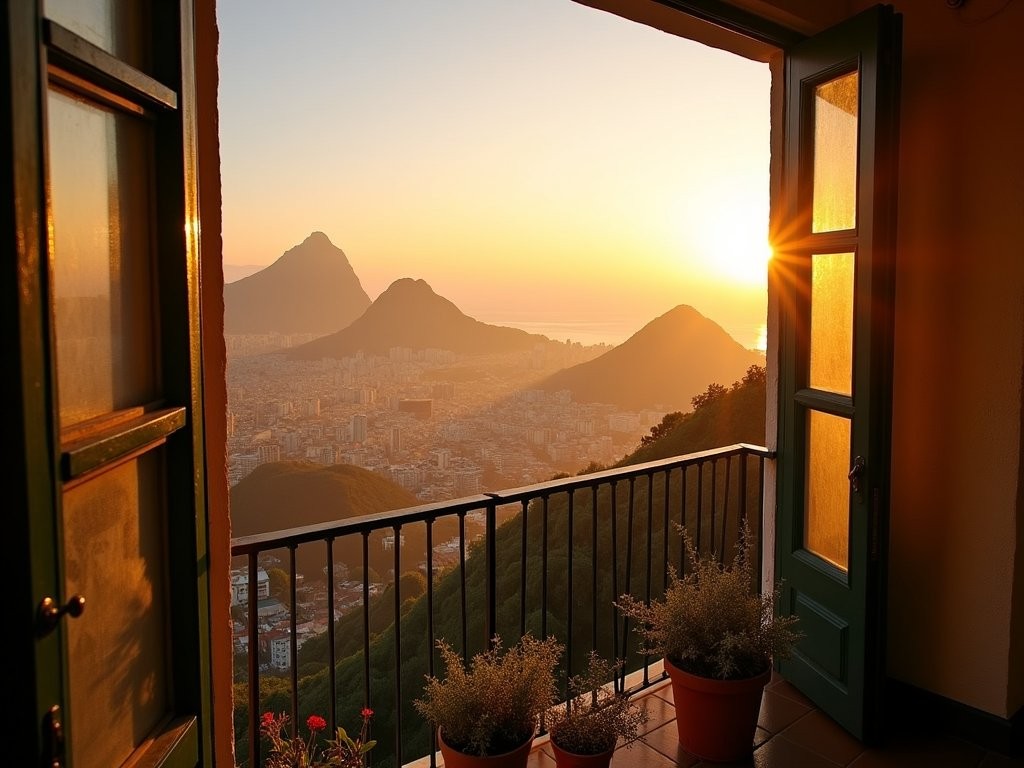
💡 Pro Tips
- Book accommodations in Santa Teresa or Lapa neighborhoods for better rates
- Use hostels with kitchen access to save on meal costs
- For stays longer than a week, negotiate directly with guesthouse owners for discounted rates
Running Rio: Free Fitness and Phenomenal Views
Rio might be famous for its beaches and nightlife, but for runners like me, it's a playground of epic proportions. My running shoes have carried me through temple routes in Thailand and monastery paths in Ethiopia, but Rio's running culture stands apart in its democratic accessibility and breathtaking backdrops.
Each morning of my stay began with a different running route, carefully mapped the night before on my GPS watch (the investment in a reliable running watch with good battery life has paid dividends across dozens of countries). The iconic 4km stretch of Copacabana Beach becomes a living fitness studio at dawn, with locals of all ages running, walking, and exercising at the free public equipment stations dotted along the promenade.
But the real magic happens when you venture beyond the obvious paths. On my third morning, I joined a free running group called 'Rio Corre' that I found through Instagram. What was advertised as a casual 10K turned into a cultural immersion as we wound through the working-class neighborhoods of Botafogo and Urca before climbing the lower trails of Sugarloaf Mountain. My guide, Felipe, pointed out hidden viewpoints no tourist pamphlet mentions, including a monastery perched on a cliff where monks still maintain a small meditation garden open to respectful visitors.
For those seeking elevation, the trails in Tijuca National Park offer challenging terrain with zero entry fees. The Vista Chinesa route rewards your climbing efforts with panoramic views that expensive helicopter tours charge hundreds for. I packed my hydration vest with water, electrolytes, and enough snacks to fuel a four-hour exploration that cost nothing beyond the Uber to the trailhead (approximately $7 from Santa Teresa).
Even non-runners can embrace Rio's fitness culture without spending a real. Free beach workouts happen spontaneously throughout the day, and I joined several volleyball games simply by standing nearby with an interested expression. The physical connection to a place—feeling its contours through your own exertion—creates memories no purchased experience can match.

💡 Pro Tips
- Join the free 'Rio Corre' running groups through their Instagram page for guided runs
- Visit Vista Chinesa in Tijuca Forest for panoramic views without entry fees
- Pack a reusable water bottle - Rio has surprisingly good tap water in most areas
Feast Without Splurging: Navigating Rio's Food Scene
The aroma of fresh pastries and coffee pulled me from sleep each morning in Rio, a sensory alarm clock more effective than any smartphone alert. While the city hosts plenty of high-end restaurants catering to expense-account travelers, the true gastronomic soul of Rio lives in its neighborhood kitchens and market stalls.
My food strategy in any new city follows the rhythm of local eating patterns, not tourist expectations. In Rio, this meant embracing the substantial Brazilian lunch culture and lighter dinners. Most importantly, I discovered the 'prato feito' (fixed plate)—a complete meal of protein, rice, beans, and salad offered at local restaurants for 15-25 reais ($3-5) during lunch hours.
Botafogo neighborhood became my lunchtime haven, particularly a corner spot called 'Tempero Carioca' where 18 reais ($3.60) bought a plate that fueled me through afternoon explorations. The server, Dona Maria, eventually started adding extra farofa (toasted cassava flour) to my plate after learning about my marathon training needs.
Breakfasts were simple affairs of fruit, bread, and coffee either included at my hostel or purchased from corner bakeries for about 10 reais ($2). My splurge—if you can call it that—was discovering açaí bowls from street vendors for 8-12 reais ($1.60-2.40), perfect post-run recovery fuel that costs triple in my Toronto neighborhood.
For dinner, I alternated between two approaches: either social meals at the hostel (contributing 15 reais to communal cooking nights) or exploring Rio's street food scene. The northeastern Brazilian acarajé stands near Lapa became my Thursday ritual—deep-fried black-eyed pea fritters stuffed with shrimp for 12 reais ($2.40).
Water costs stayed minimal thanks to my trusty water filter bottle, which has saved me hundreds in bottled water costs across multiple continents while reducing plastic waste. While Rio's tap water is generally safe, the filtration gave me extra confidence during longer runs in remote areas.
One evening, following a tip from a monastery groundskeeper I'd befriended, I discovered a weekly community dinner at a cultural center in Glória where locals gather for pay-what-you-can meals. My contribution of 25 reais was welcomed, but the real value was in the conversation with Cariocas passionate about preserving traditional recipes—a connection no Michelin-starred experience could provide.
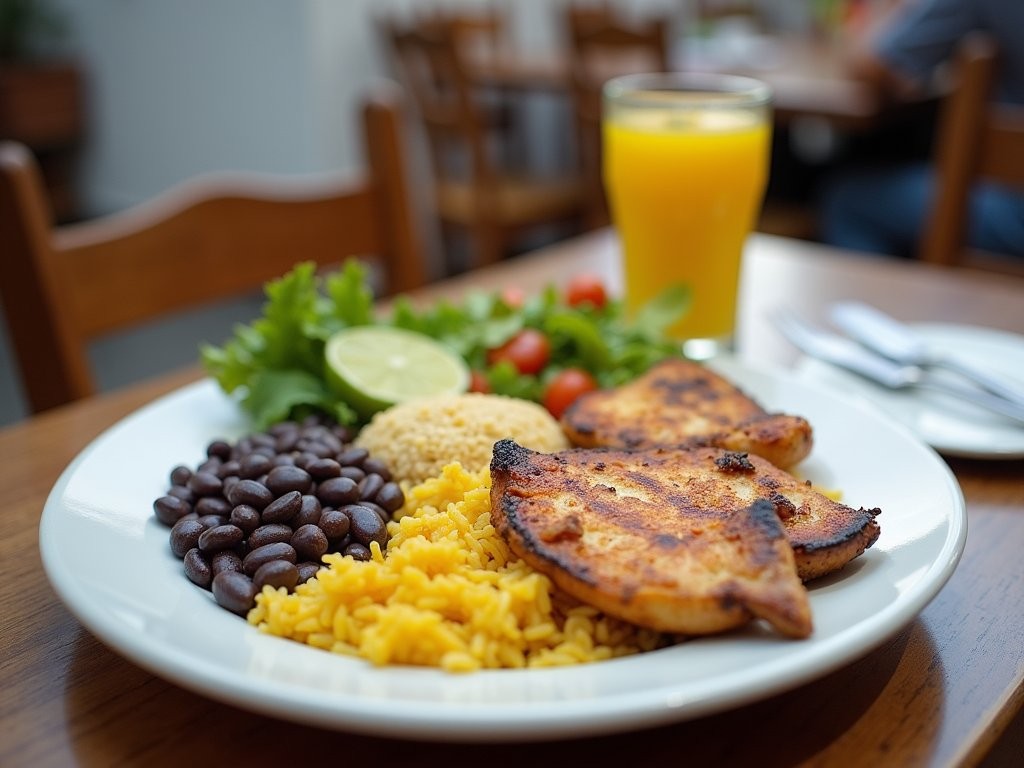
💡 Pro Tips
- Look for 'prato feito' lunch specials at local restaurants away from tourist areas
- Visit the Feira Orgânica da Glória (Gloria Organic Market) on Sundays for affordable fresh produce
- Join communal cooking nights at hostels to share costs and meet fellow travelers
Cultural Immersion: From Monasteries to Vinyl Shops
Rio's tourist circuit—Christ the Redeemer, Sugarloaf Mountain, Copacabana—appears on every visitor's Instagram feed. But my travel philosophy has always been shaped by two seemingly unrelated passions: religious monasteries and record shops. Both, I've found, offer unfiltered windows into a culture's soul without demanding much from your wallet.
The São Bento Monastery, founded in 1590, sits largely ignored by tour groups despite being one of Rio's most spiritually significant sites. Arriving for the Sunday morning Gregorian chant mass (completely free), I experienced a transcendent hour that transported me from Brazil to medieval Europe. The monks' rhythmic Latin verses created the same meditative state I chase during my longest marathon runs—that elusive flow where time suspends.
Afterward, Brother Anselmo showed me their small museum of sacred artifacts (5 reais donation) and mentioned the monastery's little-known meditation garden open to visitors seeking silence. I returned twice more during my stay, each visit costing nothing but yielding profound moments of reflection amid Rio's otherwise constant motion.
On the secular side of cultural exploration, Rio's record shops preserve the city's rich musical heritage in ways digital platforms never could. In Lapa, I discovered Tropicália Discos, where owner Paulo spent two hours introducing me to obscure 1970s Brazilian jazz-funk while charging nothing but expecting genuine interest. I left with a reasonably priced vinyl ($15) that now serves as my most meaningful Rio souvenir.
When Paulo learned of my interest in both running and music, he directed me to a weekly gathering of musicians in Pedra do Sal—historically significant as the birthplace of samba. Every Monday night, this open-air gathering brings together locals playing traditional music, with informal food and drink vendors creating a festival atmosphere. Total cost for an evening of cultural immersion: 20 reais ($4) for a caipirinha and street food.
For those interested in Rio's complex social history, I recommend the free walking tours by Rio Free Walking Tour. Their 3-hour historical center tour operates on a tip-what-you-wish model (I gave 25 reais, about $5). My guide Mariana offered insights into Brazil's colonial past, slavery history, and modern challenges that no museum placard could convey with such nuance.
The most unexpected cultural connection came through my portable speaker. During a morning run along Flamengo Beach, I paused to stretch while playing some Antonio Carlos Jobim. An elderly gentleman approached, smiling, and began telling me (in limited English mixed with Portuguese) about seeing Jobim perform live in the 1960s. Music, once again, bridged what language could not.

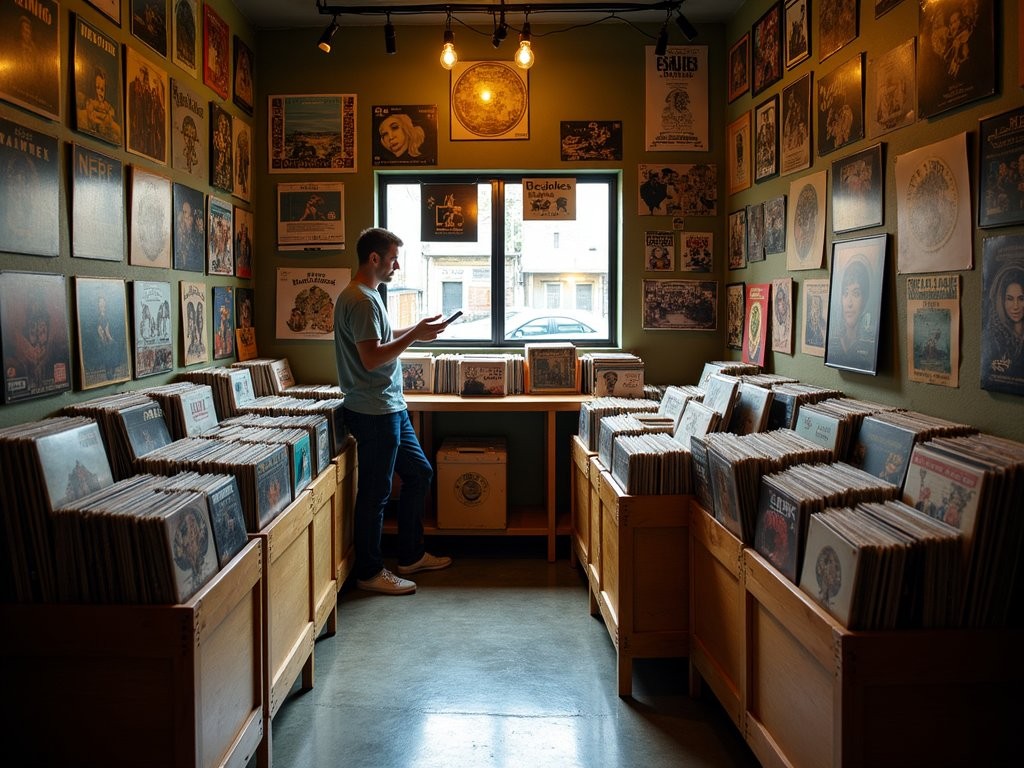
💡 Pro Tips
- Attend the free Gregorian chant mass at São Bento Monastery on Sundays at 10am
- Visit Pedra do Sal on Monday evenings for authentic samba gatherings without entry fees
- Check the schedule for free museum days - many Rio museums offer one free admission day per week
Transportation Hacks: Navigating Rio Without Breaking the Bank
When I first landed at Rio's Galeão International Airport, the taxi quotes to Santa Teresa made my budget-conscious heart skip a beat. But seven years of navigating global cities on a nonprofit worker's salary has taught me that transportation often presents the greatest opportunity for savings—if you're willing to move like a local rather than a tourist.
My first money-saving decision was purchasing a Bilhete Único Carioca (Rio Single Ticket) card immediately upon arrival. This rechargeable card cost 3 reais (about $0.60) and reduced individual bus fares from 4.05 to 3.80 reais while enabling free transfers within 2.5 hours. Over my week-long stay, this simple step saved approximately 25 reais ($5) while eliminating the need for exact change.
Rio's metro system deserves more praise than it typically receives. Clean, efficient, and covering most tourist areas, a single ride costs 5.90 reais ($1.18). The real value emerged on Sundays and holidays when fares drop to 2.90 reais ($0.58) for unlimited rides—perfect for my Sunday monastery-hopping itinerary.
For areas beyond public transit's reach, I embraced Rio's ride-share options with strategic timing. By avoiding rush hours (7-9am and 5-7pm), my rides typically cost 40-50% less. A journey from Santa Teresa to Jardim Botânico cost 19 reais ($3.80) at 10am but would have exceeded 35 reais during peak hours.
My marathon training provided an unexpected transportation advantage: many distances tourists would automatically Uber, I could comfortably run or walk. The 5km between Copacabana and the Botanical Garden became my favorite morning route rather than a transportation expense.
For longer journeys, Rio's public buses deserve mention despite their intimidating reputation. The 2016 Olympics prompted improved signage and route information, making the system more navigable for visitors. Bus #422 became my go-to for reaching Jardim Botânico from downtown at just 4.05 reais ($0.81), though it requires basic Portuguese comprehension to ensure you don't miss your stop.
When exploring Rio's famous hillside favelas like Vidigal (which offers stunning views and increasingly popular hostels), the combination of moto-taxis and local vans called 'kombis' provides authentic and ultra-budget transportation. My journey up Vidigal cost just 5 reais ($1) via moto-taxi—a fraction of organized tours while supporting local drivers directly.
Perhaps my most valuable transportation discovery was the ferry to Niterói. For 7.30 reais ($1.46), this 20-minute journey across Guanabara Bay offers million-dollar views of Rio's skyline that rival expensive helicopter tours. Bringing my travel journal aboard the afternoon ferry became a ritual, capturing reflections while floating between perspectives of the marvelous city.

💡 Pro Tips
- Purchase a Bilhete Único Carioca card immediately upon arrival for public transit discounts
- Use the metro on Sundays and holidays when fares are reduced by 50%
- Schedule ride-shares outside rush hours (7-9am and 5-7pm) for significant savings
Community Connections: Free Experiences That Define Rio
The essence of Rio—what Brazilians call 'carioca spirit'—isn't found in its attractions but in its community spaces. As someone who's coordinated volunteer efforts across three continents, I've developed a knack for finding where locals gather authentically, and Rio offers these spaces in abundance.
My most memorable Rio experiences cost nothing because they centered around community connection rather than commercial exchange. Take Arpoador Rock, the dramatic formation between Ipanema and Copacabana beaches. While tourists visit briefly for photos, locals gather nightly to applaud the sunset—a simple ritual where strangers become momentary friends in appreciation of natural beauty. Bringing my packable beach blanket (which has accompanied me across 23 countries) created a comfortable perch for sunset meditation and conversation with neighbors.
Rio's public spaces transcend economic divisions in ways few global cities manage. On Sunday mornings, the city closes Avenida Atlântica along Copacabana Beach to vehicles, transforming it into a democratic playground where millionaires and working-class families share the same promenade. I joined impromptu football matches, watched street performers, and practiced my Portuguese with patient elders playing chess in the shade.
The city's parks offer another dimension of free community engagement. Parque Lage sits in the shadow of Christ the Redeemer but charges no entrance fee despite housing historic buildings, beautiful gardens, and even a visual arts school with free exhibitions. I spent a contemplative afternoon sketching in my travel journal beside its central pool, occasionally chatting with art students about their creative processes.
For music lovers, Rio's street performances rival formal concerts. At the Feira de São Cristóvão (Northeastern Traditions Market), I discovered regional music styles from Brazil's northeast performed live throughout the weekend. While the market itself sells crafts and food, the music requires no purchase—just appreciation.
The most unexpected community connection came through Rio's growing meditation community. A Facebook search for 'meditação Rio' led me to a free weekly meditation circle in Flamengo Park led by practitioners from various traditions. Despite my limited Portuguese, the Saturday morning session welcomed me warmly, creating a moment of transnational spiritual connection that reminded me of similar circles I'd joined in Thailand and Ethiopia.
My volunteer coordinator instincts also led me to investigate local environmental initiatives. Through the hostel community board, I discovered a beach cleanup organized by Projeto Grael. Joining their Saturday morning effort at Flamengo Beach connected me with environmentally conscious locals while contributing positively to a city that had already given me so much. The post-cleanup conversation with organizers about Rio's environmental challenges provided insights no tourist tour could offer.

💡 Pro Tips
- Join the sunset gathering at Arpoador Rock between Ipanema and Copacabana beaches
- Visit Parque Lage for free gardens, art exhibitions and Christ the Redeemer views without crowds
- Check Facebook groups like 'Rio de Janeiro Expats & Locals' for free community events during your stay
Final Thoughts
As my final Rio morning dawned and I laced up for one last run along Copacabana, I tallied my expenses: seven days averaging $47 per day, including everything from accommodations to that special vinyl record from Tropicália. But the real value of Rio can't be calculated on spreadsheets—it lives in the monastery's echoing chants, the sunrise conversations with fellow runners, and the rhythm of communities that welcomed a stranger into their daily rituals.
Rio taught me that a city's true wealth isn't in its attractions but in its accessibility—how freely it offers its spirit to those willing to move at a local's pace rather than a tourist's schedule. Like the best marathon routes, Rio rewards those who find their rhythm and settle into the journey rather than racing between checkpoints.
So pack light, bring your running shoes (or walking sandals), and come with an open heart rather than an open wallet. The Marvelous City awaits with experiences no luxury package could possibly include—the authentic pulse of a place where life is celebrated not as a commodity, but as a community endeavor. Until our paths cross, may your journeys be rich in connection and light on your budget.
✨ Key Takeaways
- Rio can be experienced authentically for under $50/day with strategic choices
- Community spaces like beaches, parks and local gatherings offer Rio's richest experiences at no cost
- Transportation choices (public transit, strategic timing) represent the biggest opportunity for budget savings
- Cultural immersion through monasteries, music venues and local markets provides deeper connection than tourist attractions
📋 Practical Information
Best Time to Visit
September-November (spring) for mild temperatures and lower rainfall
Budget Estimate
$45-50/day including accommodation, food, transportation and activities
Recommended Duration
5-7 days
Difficulty Level
Intermediate

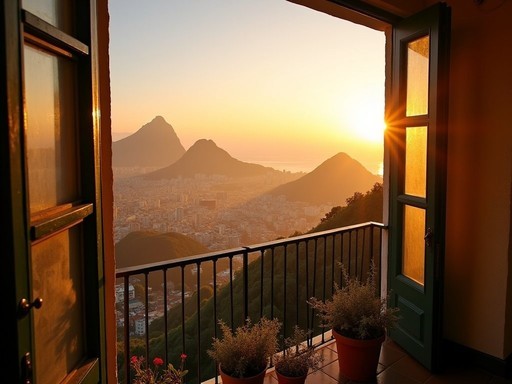

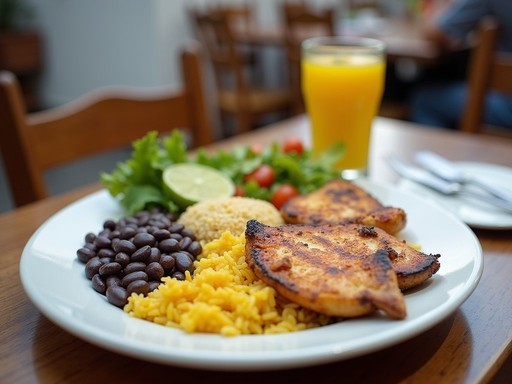








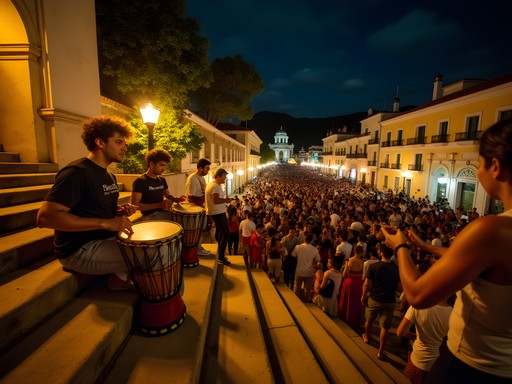




Comments
travelclimber
That sunrise shot of Sugarloaf Mountain is incredible! Did you really hike up for free?
Mason Sullivan
Thanks! That particular view is from a free trail starting in Urca neighborhood. Not all the way to the top (that requires the cable car) but this viewpoint is about 30 minutes up and completely free!
travelclimber
Adding this to my list! Thanks for the insider tip.
Lillian Diaz
Mason, this brought back so many memories of my backpacking days in Rio! I stayed at a hostel in Ipanema for $18/night with breakfast included back in 2022. One budget tip I'd add: download the app Moovit before you go - it was a lifesaver for navigating public transit without data. And for coffeepro - definitely check out Botafogo or Catete for budget stays that are still well-connected. The sunset views from Arpoador between Ipanema and Copacabana beaches are absolutely free and honestly one of the most magical experiences in the city!
wildbuddy
Anyone tried those budget food markets mentioned in the article? Are they really good quality? Planning my first international trip and Rio seems amazing but I'm nervous about food safety while trying to save money.
nomadzone
The markets are fantastic! Look for places with lots of locals. I ate at food markets almost every day and never got sick. The fresh fruit is incredible and so cheap!
Kimberly Murphy
Fantastic guide, Mason! I've been to Rio three times and still learned some new budget tricks here. The monastery tip is brilliant - I had no idea you could visit for free on Tuesdays! For anyone worried about safety while traveling on a budget, I found that carrying a anti-theft daypack gave me peace of mind, especially on public transport. Also, the free walking tours that start at Carioca Square are AMAZING for getting oriented and meeting other travelers. They work on tips, so still budget-friendly while supporting locals. Will be sharing this with my followers!
wildbuddy
How's the safety situation there now? I've heard mixed things but really want to visit.
Kimberly Murphy
It's like any big city - be aware of your surroundings, don't flash valuables, and stick to well-traveled areas at night. I felt completely fine in tourist zones and using public transport during the day!
nomadzone
I was in Rio last year and definitely agree with the public transportation tips. The metro is super clean and efficient - much better than taking taxis everywhere. One thing I'd add is to get a pre-paid Rio card if staying more than 3 days. Saved me a ton! Also found that hostels in Botafogo gave the best bang for buck while still being safe and central. The morning runs along the beach were the highlight of my trip too!
coffeepro
This is exactly what I needed! Going to Rio next month and trying to keep costs down.
Lillian Diaz
You're going to love it! Make sure to try the acai bowls from street vendors - way cheaper than the touristy spots and honestly better!
coffeepro
Thanks for the tip! Any specific areas you'd recommend staying in?
islandguy
Just got back from Rio and managed to stick to about $55/day using many of these same tips. The advice about per-kilo restaurants is spot on - I ate like a king for lunch every day for under $7. One thing I'd add: download the Rio bus app before you go. Saved me tons on transportation and it works offline once you've loaded the routes.
greenvibes
How did you handle currency exchange to get the best rates? ATMs or bring cash?
Jean Wells
Not the author, but I found using a no-foreign-transaction-fee credit card for larger purchases and withdrawing from bank ATMs (not the standalone ones) worked best. Bradesco and Banco do Brasil ATMs were reliable.
sunnyhero
This post is GOLD!! Bookmarking for my trip in December! Those morning beach runs sound absolutely dreamy!
beachdiver
Any recommendations for cheap eats near Ipanema? Going next week!
islandguy
Not the author but I was there last month - try Galeto Sat's on Rua Barão da Torre. Amazing grilled chicken for cheap and it's where the locals go. Also any juice bar with 'sucos' in the name will have affordable açaí bowls.
beachdiver
Thanks so much! Adding these to my list right now.
Venture X
Premium card with 2X miles, $300 travel credit, Priority Pass